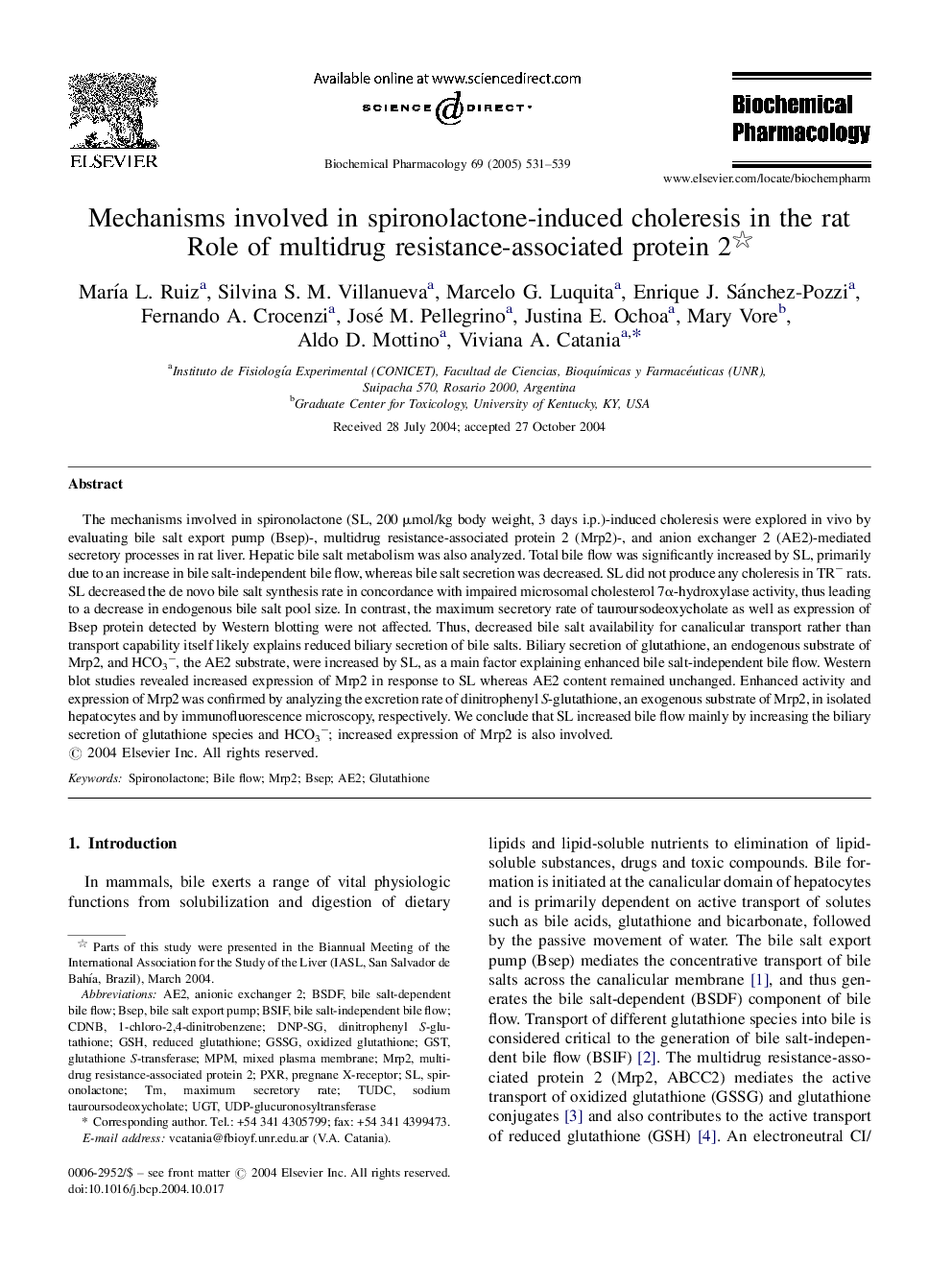| Article ID | Journal | Published Year | Pages | File Type |
|---|---|---|---|---|
| 9002188 | Biochemical Pharmacology | 2005 | 9 Pages |
Abstract
The mechanisms involved in spironolactone (SL, 200 μmol/kg body weight, 3 days i.p.)-induced choleresis were explored in vivo by evaluating bile salt export pump (Bsep)-, multidrug resistance-associated protein 2 (Mrp2)-, and anion exchanger 2 (AE2)-mediated secretory processes in rat liver. Hepatic bile salt metabolism was also analyzed. Total bile flow was significantly increased by SL, primarily due to an increase in bile salt-independent bile flow, whereas bile salt secretion was decreased. SL did not produce any choleresis in TRâ rats. SL decreased the de novo bile salt synthesis rate in concordance with impaired microsomal cholesterol 7α-hydroxylase activity, thus leading to a decrease in endogenous bile salt pool size. In contrast, the maximum secretory rate of tauroursodeoxycholate as well as expression of Bsep protein detected by Western blotting were not affected. Thus, decreased bile salt availability for canalicular transport rather than transport capability itself likely explains reduced biliary secretion of bile salts. Biliary secretion of glutathione, an endogenous substrate of Mrp2, and HCO3â, the AE2 substrate, were increased by SL, as a main factor explaining enhanced bile salt-independent bile flow. Western blot studies revealed increased expression of Mrp2 in response to SL whereas AE2 content remained unchanged. Enhanced activity and expression of Mrp2 was confirmed by analyzing the excretion rate of dinitrophenyl S-glutathione, an exogenous substrate of Mrp2, in isolated hepatocytes and by immunofluorescence microscopy, respectively. We conclude that SL increased bile flow mainly by increasing the biliary secretion of glutathione species and HCO3â; increased expression of Mrp2 is also involved.
Keywords
Related Topics
Health Sciences
Pharmacology, Toxicology and Pharmaceutical Science
Pharmacology
Authors
MarÃa L. Ruiz, Silvina S. M. Villanueva, Marcelo G. Luquita, Enrique J. Sánchez-Pozzi, Fernando A. Crocenzi, José M. Pellegrino, Justina E. Ochoa, Mary Vore, Aldo D. Mottino, Viviana A. Catania,
